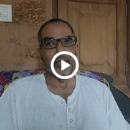
Login

Ayurveda, the ancient medical system from India, is a popular treatment system in the modern world. One of the significant factors that affect the decision to go for an Ayurveda treatment is the cost associated with it.
Let us understand the components typically included in the cost provided by Ayurveda hospitals for your in-patient (IP) treatment.
Ayurveda treatment cost inclusions:
Typically, the treatment cost provided by the Ayurveda hospital will include
The hospital may provide the cost in Indian Rupees (INR) or US Dollars (USD). Please check this and convert it to your home currency where needed.
Next, let us look at the elements that make up the cost.

There are eight main factors make up the cost. These are listed and explained in detail below.
1. Duration of treatment
Ayurveda treatment duration will generally be between 14-28 days. It can go beyond that in some cases. The time typically depends on factors like
The treatment charges are directly proportional to the duration. The more days, the higher the treatment charges will be.
Please note that the treatment duration is as per the doctor's direction, and the patient will have no control over that.
2. Type of room
Almost all the Ayurveda hospitals will have different types of rooms for your stay. These are typically shared, private, deluxe rooms, suite rooms, and private cottages. Deluxe, suite, and cottage-type rooms will be more expensive and, at the same time, more comfortable than standard rooms. Some Ayurveda hospitals have wards or shared rooms at a much lower cost.
3. Type of hospital
The location, ambience, facilities, and amenities vary across Ayurveda hospitals. All of these will have an impact on the treatment cost. So, each hospital may have different charge structures for the same treatment and duration.
You should carefully look at the facilities that you want as that will help you get the right hospital and cost.
4. Bystander (Attendant) charges
Ayurveda hospitals may require a bystander/attendant to accompany you for the entire treatment duration. Some hospitals may charge a fee, and in that case, the treatment plan will mention that. Please clarify this upfront to avoid any surprises later.
It is worth noting that bystanders/attendants can take rejuvenation or any other treatment at the same center if needed. In such cases, the additional charges you will incur will only be for the treatment charges.
5. Food expenses
Usually, the cost will not cover food expenses. The cost of food per day could be in the range of 3 – 6 USD (200 to 500 INR) per person. Most of the Ayurveda hospitals will provide only vegetarian food in the canteen.
6. Other incidental expenses
Incidental expenses like laundry, newspapers, stationery items, extra bed linen, etc., will be additional. Some hospitals may charge for Internet connectivity in the rooms. Suggest you check this in advance to avoid surprises later.
7. Transport from/to Airport or Railway station
Most Ayurveda hospitals typically have large open spaces and usually are located away from the city center and airport/railway stations. Transport charges from the airport/railway station to the hospital may be chargeable. Some hospitals offer free transport from airports.
8. Discharge medicines
Ayurveda doctors will prescribe medicines at the time of discharge. You will have to consume these medicines for a certain period after completing the treatment. The cost of these medicines will be additional.
The picture shows the impact on cost and the control you can exert on various parameters. As can be seen, there are some parameters like treatment duration where there is very little control as the doctor decides it. At the same time, factors like room type and hospital are your decision

Note: * Control indicates whether the expense is controllable by you.
Conclusion:
Ayurveda treatment may seem to be expensive in some cases. However, correctly understanding the cost elements will go a long way in making the right decision. You can control many factors in case you are looking at reducing the cost of treatment. As with most other things, it may well be a trade-off between comfort and price.

Hendric T
Botswana

Abdullah Bucheeri
Bahrain


